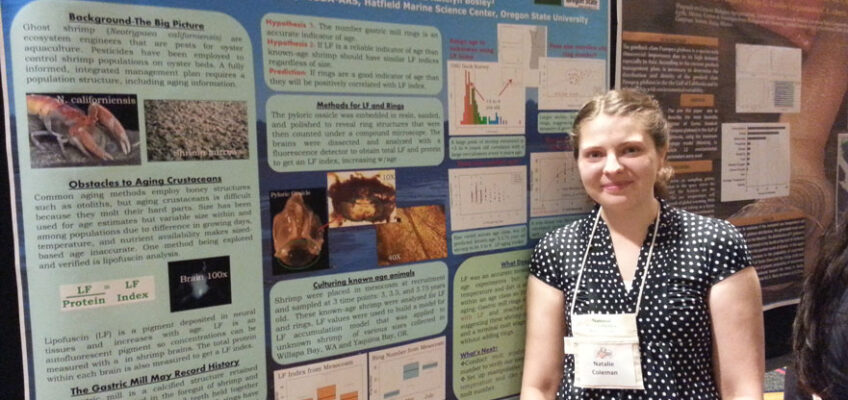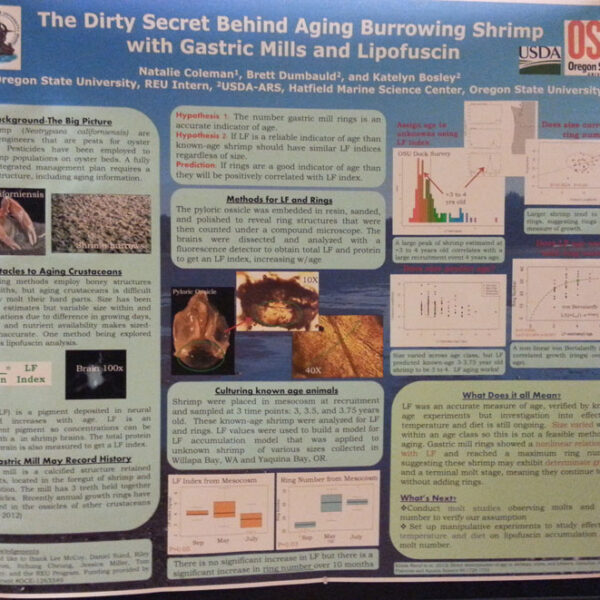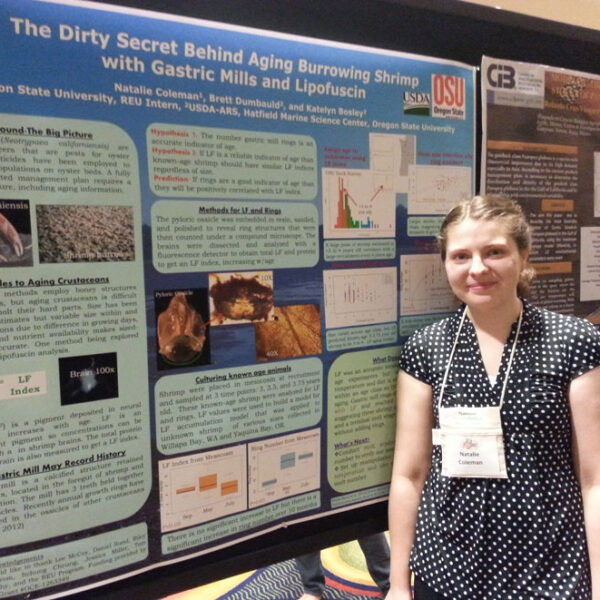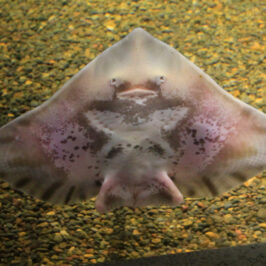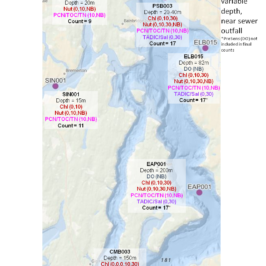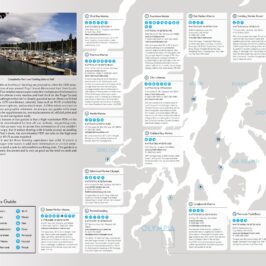I was asked to present my paper on age determination of burrowing shrimp at the Annual Conference for the National Shellfisheries Association in Monterey, California. My presentation was on March 24, 2015. Here are the abstract and poster portions of the presentation. Enjoy!
Abstract
The dirty secret on burrowing shrimp growth: Verification of two alternative methods of age determination in the burrowing shrimp N. californiensis.
Authors:
Natalie B Coleman – Department of Integrated Biology, Oregon State University, Corvallis, Oregon
Katelyn M Bosley –Department of Fisheries and Wildlife, Oregon State University, Newport, Oregon
Brett Dumbauld – USDA-ARS, Newport, Oregon
The burrowing shrimp Neotrypaea californiensis is an important ecosystem engineer inhabiting estuaries along the Pacific Northwest coast. The burrowing action of these shrimp is a threat to oyster aquaculture, especially in the state of Washington where topical pesticides have been sprayed to control shrimp populations. More information is needed about this species, including a viable aging method to contribute to an integrated pest management plan for these shrimp. Obtaining accurate age estimates for crustaceans is hard because they molt their hard parts and don’t retain evidence of age over a lifespan. Our study explored verification of two methods, lipofuscin analysis and gastric mill rings. Each method was used on known-age shrimp grown in mesocosms since recruitment and shrimp from surveys conducted in Yaquina Bay, Oregon and Willapa Bay, Washington. Lipofuscin values of known-age shrimp were similar while size varied, verifying that this method is useful in the direct aging of crustaceans. The number of rings correlated more directly with growth than with lipofuscin, suggesting that they might not be a direct measure of linear age but rather metabolic age, which is likely more affected by environmental factors. Size varied across age classes which indicates size is not a reliable indicator of age in N californiensis. Mean lipofuscin index from mesocosm shrimp was used to assign age classes to shrimp from population surveys to reveal age classes. The ability to create an age structure using lipofuscin-based methods should enable creation of more accurate population models and provide valuable information on burrowing shrimp growth rates which appear to vary significantly.
